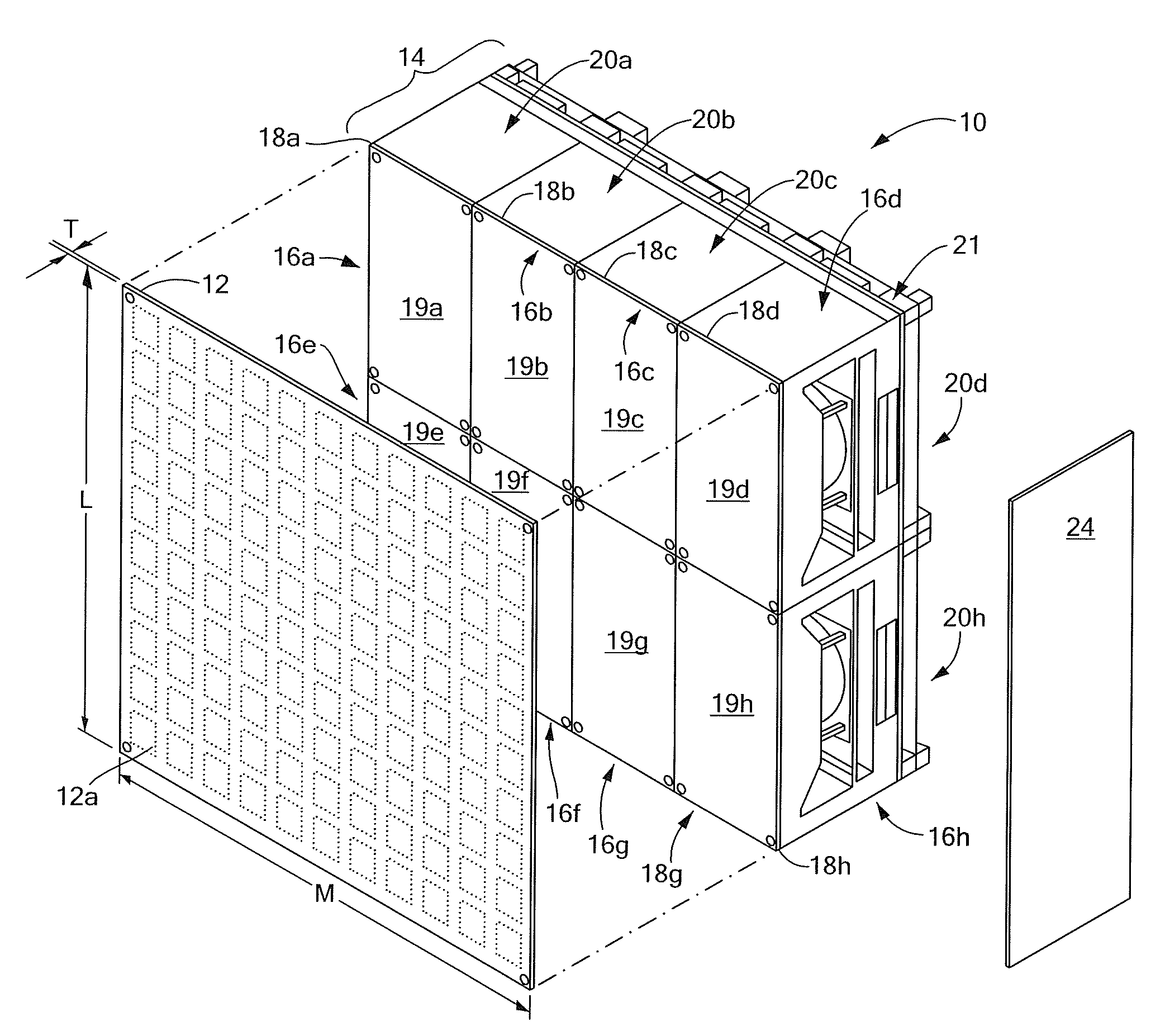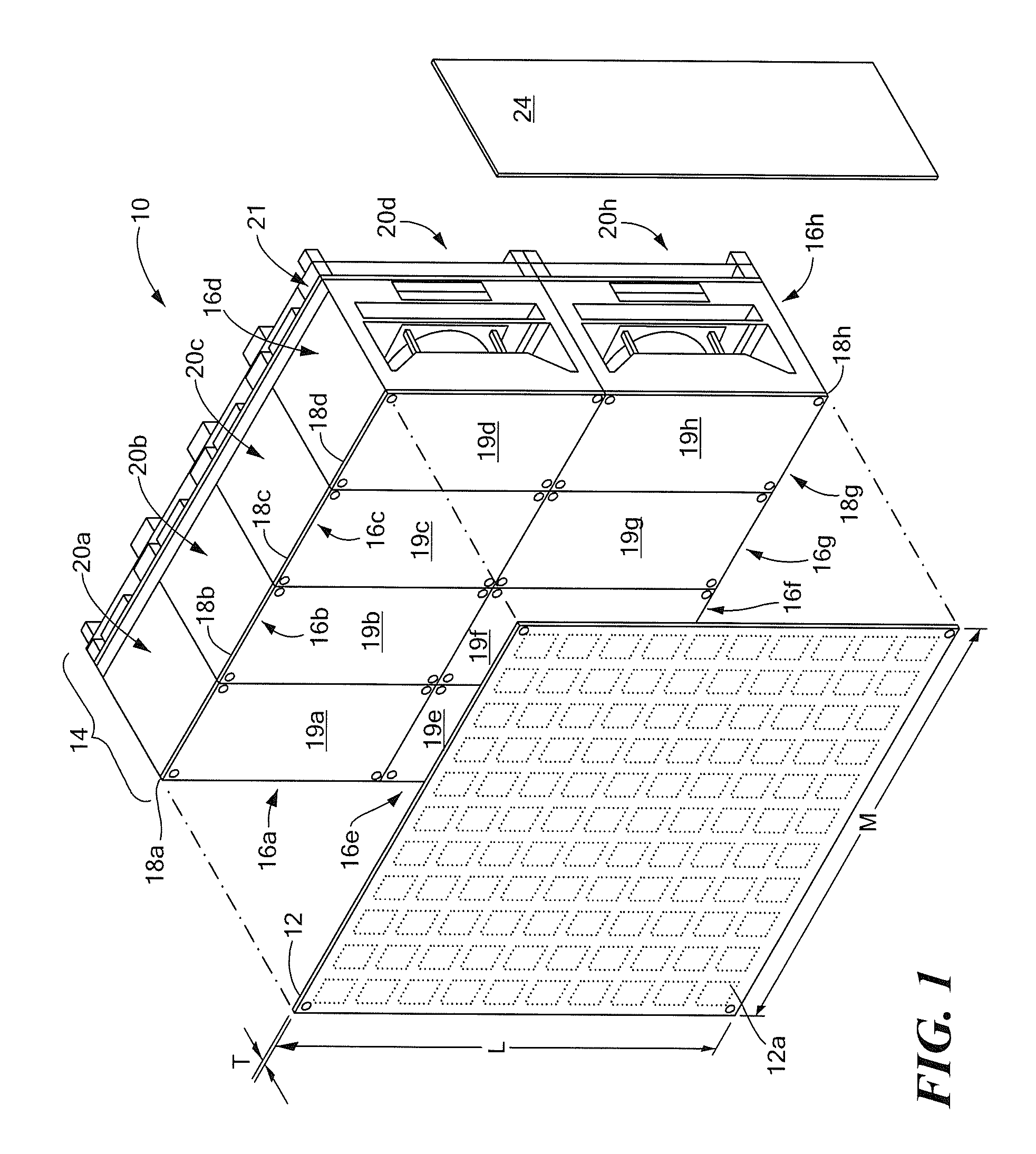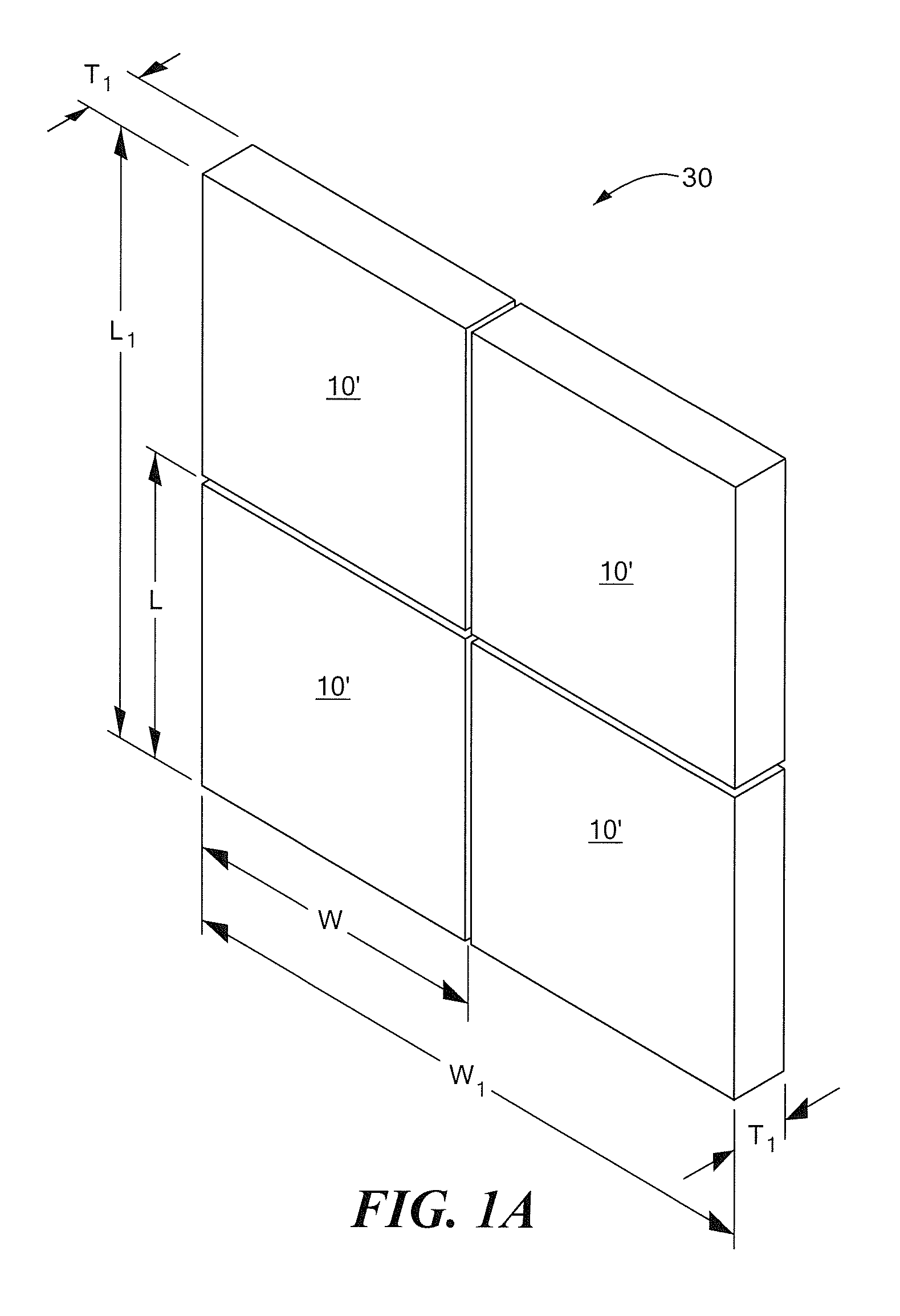Method and Apparatus for Thermal Management of a Radio Frequency System
a radio frequency system and thermal management technology, applied in the direction of electrical apparatus casings/cabinets/drawers, instruments, semiconductor/solid-state device details, etc., can solve the problem of reducing the thermal resistance between the heat generating portions of the flip chip circuit and the heat sink, and achieves low noise, large development costs, and effective cooling of a single active panel
- Summary
- Abstract
- Description
- Claims
- Application Information
AI Technical Summary
Benefits of technology
Problems solved by technology
Method used
Image
Examples
Embodiment Construction
[0040]Referring now to FIG. 1, an exemplary active, electronically scanned array (AESA) 10 having a panel architecture is provided from an antenna panel 12 (also sometimes referred to herein as a “radiator panel”) coupled to an integrated panel array assembly (IPAA) 14. Antenna panel 12 is thin and generally planar and has a plurality of antenna elements generally denoted 13, disposed to transmit and receive RF energy through a first surface 12a thereof. Antenna elements 13 are shown in phantom since they are typically below external surface 12a and thus not directly visible in FIG. 1.
[0041]In one embodiment, antennal panel 12 may be provided as a stacked patch antenna panel configured for operation in the X-band frequency range and having a thickness (T) in the range of about 0.1 inch to about 0.4 inch (with a thickness typically of about 0.2 inch being preferred) and having a width (W) of about 0.5 meters (m) and a length (L) of about 0.5 m with 1024 patch antenna elements (not al...
PUM
 Login to View More
Login to View More Abstract
Description
Claims
Application Information
 Login to View More
Login to View More - R&D
- Intellectual Property
- Life Sciences
- Materials
- Tech Scout
- Unparalleled Data Quality
- Higher Quality Content
- 60% Fewer Hallucinations
Browse by: Latest US Patents, China's latest patents, Technical Efficacy Thesaurus, Application Domain, Technology Topic, Popular Technical Reports.
© 2025 PatSnap. All rights reserved.Legal|Privacy policy|Modern Slavery Act Transparency Statement|Sitemap|About US| Contact US: help@patsnap.com



